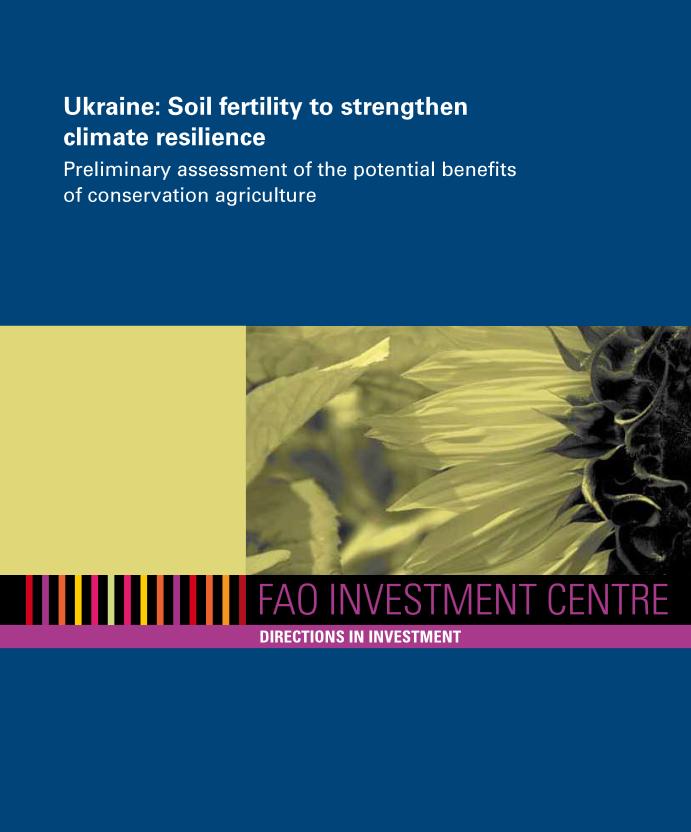High stakes for Ukrainian soils: combating erosion with Conservation Agriculture practices

Ukraine is renowned as the breadbasket of Europe thanks to its black Chernozem soils that offer exceptional agronomic conditions, due to its high composition of organic matter. However, its benefits are being threatened by increasing soil erosion, which has been exacerbated by excessive land tillage and negative impacts of climate change. The estimated 500 million tonnes of soil eroded annually in Ukraine, valued to be around one-third of gross domestic product (GDP), and the resulting loss of soil fertility across 32.5 million hectares has meant a demand for additional resources to maintain productivity levels and thus an increase in production costs.
Under the cooperation between FAO and the World Bank, the FAO Investment Centre has published “Ukraine: Soil fertility to strengthen climate resilience”, which is a preliminary assessment of the potential benefits of Conservation Agriculture (CA) – on the farm, national, and global levels. “To remain competitive on a global scale, Ukraine’s strategic geographic position alone will not suffice. We are seeing that the negative economic impacts of soil erosion in the agricultural sector and adopting no-till techniques now will be far less costly than the alternative we will be faced with in the future” remarked the study’s co-author and FAO Senior Agronomist, Turi Fileccia. The report discusses the drivers of soil erosion and attempts to quantify the potential benefits that large scale CA adoption could offer for Ukraine.
The publication estimates that the national annual benefits potentially accruing from CA/no-till adoption on 17 million hectares could reach an impressive USD 4.4 billion, or 34 percent of agricultural GDP, and almost stop the USD 5 billion natural capital depletion caused by soil erosion (without counting global environmental and food security benefits). Maurizio Guadagni, Senior Rural Development Specialist at the World Bank and co-author of the publication, explained that “CA practices have shown evidence of limiting erosion and increasing profitability while adapting to and mitigating climate change; this serves as an example of climate-smart agriculture triple wins. But to achieve these benefits, significant investments are required.”
With the support of the World Bank, FAO and the International Maize and Wheat Improvement Center (CIMMYT), the technology has already been successfully implemented in Kazakhstan, having been gradually adopted and reached 1.85 million ha in 2012, with significant benefits achieved in productivity levels, food security and environmental considerations.
The publication is intended for policymakers and potential investors to understand concretely what is at stake if the drivers of soil erosion are not properly addressed. It offers suggested areas of investment, including on the verification of preliminary estimates, land markets, agricultural technology, financial services and risk management.
